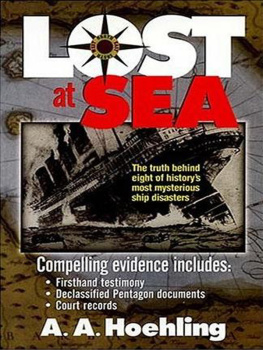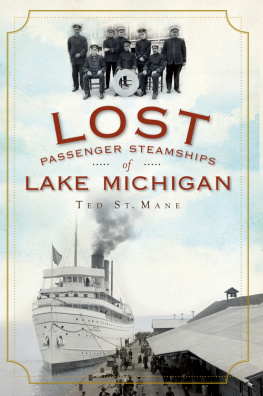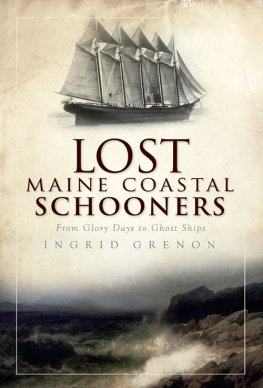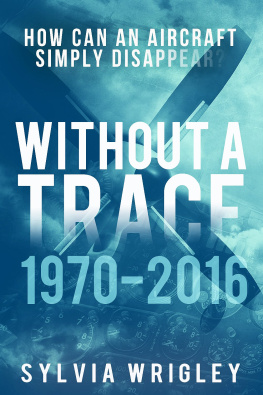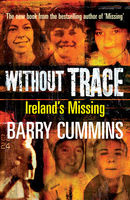Hoehling - Lost at Sea
Here you can read online Hoehling - Lost at Sea full text of the book (entire story) in english for free. Download pdf and epub, get meaning, cover and reviews about this ebook. City: Nashville, year: 1999;2010, publisher: Thomas Nelson;Rutledge Hill, genre: Art. Description of the work, (preface) as well as reviews are available. Best literature library LitArk.com created for fans of good reading and offers a wide selection of genres:
Romance novel
Science fiction
Adventure
Detective
Science
History
Home and family
Prose
Art
Politics
Computer
Non-fiction
Religion
Business
Children
Humor
Choose a favorite category and find really read worthwhile books. Enjoy immersion in the world of imagination, feel the emotions of the characters or learn something new for yourself, make an fascinating discovery.
Lost at Sea: summary, description and annotation
We offer to read an annotation, description, summary or preface (depends on what the author of the book "Lost at Sea" wrote himself). If you haven't found the necessary information about the book — write in the comments, we will try to find it.
Lost at Sea features the incredible stories of eight ships and their passengers, some of which vanished with hardly a trace or no trace at all. Veteran history and mystery writer A.A.Hoehling explores these previously unexplained maritime mishaps with the skill of a detective seeking to uncover a murderer.
Lost at Sea — read online for free the complete book (whole text) full work
Below is the text of the book, divided by pages. System saving the place of the last page read, allows you to conveniently read the book "Lost at Sea" online for free, without having to search again every time where you left off. Put a bookmark, and you can go to the page where you finished reading at any time.
Font size:
Interval:
Bookmark:

LOST AT
SEA
A. A. Hoehling
Rutledge Hill Press
Nashville, Tennessee
Copyright 1984, 1999 by A. A. Hoehling
All rights reserved. Written permission must be secured from the publisher to use or reproduce any part of this book, except for brief quotations in critical reviews and articles.
Published in Nashville, Tennessee, by Rutledge Hill Press, 211 Seventh Avenue North, Nashville, Tennessee 37219.
Distributed in Canada by H. B. Fenn & Company, Ltd., 34 Nixon Road, Bolton, Ontario L7E 1W2.
Distributed in Australia by The Five Mile Press Pty., Ltd., 22 Summit Road, Noble Park, Victoria 3174.
Distributed in New Zealand by Tandem Press, 2 Rugby Road, Birkenhead, Auckland 10.
Distributed in the United Kingdom by Verulam Publishing, Ltd., 152a Park Street Lane, Park Street, St. Albans, Hertfordshire AL2 2AU.
Typography by Roger A. DeLiso, Rutledge Hill Press
The original version of this book was published in 1984 by Stackpole Books of Harrisburg, Pennsylvania.
Jacket photograph. Artists concept of the sinking of the Lusitania, published in the London Graphic. The liner assumed the acute angle, confirmed by survivors testimony, when her bow buried itself in the sand and mud of the sea bottom only three hundred feet below, not even half the great ships length. This reproduction is from U.S. Navy Archives.
Library of Congress Cataloging-in-Publication Data
Hoehling, A. A. (Adolph)
Lost at sea / A. A. Hoehling.
p. cm.
Originally published: Harrisburg, PA : Stackpole Books, c1984.
Includes bibliographical references (p. ).
ISBN 1-55853-744-9 (pbk.)
1. Shipwrecks. I. Title.
G525.H77 1999
910.4'52--dc21
99-11922
CIP
Printed in the United States of America
1 2 3 4 5 6 7 8 903 02 01 00 99
CONTENTS
O God, thy sea is so great,
and my boat is so small.
from a Breton fishermens prayer
This quotation on a plaque given to President John F. Kennedy by Admiral Hyman Rickover was kept by Kennedy on his desk.
H ello, Donnathis is Bob!
It was midnight, October 24, 1980. Donna Gove had answered the phone to hear a familiar but unexpected voicethat of her husband of three months. Robert Gove, twenty-six, was third mate on the American freighter, Poet. His call came as a surprise since he was some two hundred miles out in the Atlantic east of Delaware Bay, en route to Port Said. This was their first separation since their honeymoon.
Bob said he missed her. He hoped to be home in another three or four weeks. He did not allude to the vessel, his shipmates, or the weather.
Loaded with yellow grain corn, a Department of State AID shipment to the troubled Middle East, Poet displaced, altogether, some twenty-one thousand tons. Thus deeply laden, the World War II C-4 transport had put Cape Henlopen astern this gray, lowering Friday in the face of gale warnings. A large disturbance was howling up the coast.
Bobs good-bye to Donna in this radiotelephone conversation would be his final one. It was also the last known message ever transmitted from the Poet. In spite of sea and air sweeps that would cover nearly three hundred thousand square miles of the Atlantic Ocean, not a trace, not so much as one identifiable life jacket was ever found.
Independent investigations conducted by the U.S. House of Representatives, by the Coast Guard, and by the National Transportation Safety Board all came to the same unsatisfactory conclusion, through different and diverse phraseology: Poets disappearance was a complete mystery. The Safety Board, for example, observed that it was unable to determine the probable cause of this accident. In fact, this governmental entity, along with the Coast Guard, found it could develop a fairly convincing thesis to show why the Poet should still be afloat.
But, where was she?
Though the most recent disappearance of a major merchant vessel, the loss did not write maritime history. The disappearance of the Poet was but another tragic chapter in the annals of the sea. As long as man has dared deep waters and the elements, families have waited on shores across the world for ships that never would come home. They had foundered, broken up, burnedvanished without a clue.
Immigrants booking passage for America, on sailing vessels and steamers alike, could praise the Lord simply for their safe crossing of the Atlantic. All too many were never heard of again: for one, the ornate steamship President, distinguished by a figurehead of George Washington at her bowsprit plus an American eagle and British lion at the stern. The British and American Navigation Companys entry in the transatlantic carriage trade, as it were, sailed on March 4, 1841, from New York, carrying thirty passengers and a crew of about ninety. Lord Lynnox and the well-known Irish actor Tyrone Power were among the former. She vanished as though swallowed in toto by a voracious and merciless ocean.
Thirteen years later, in 1854, the City of Glasgow was considered as modern a steamer as had ever slid down the ways. Passengers and crew on her fateful voyage totaled nearly five hundred, an unusually large number for one vessel. Like the President, the City of Glasgow paddled into nowhere, to become a bafflement to her underwriters and a vexing question mark in the lore of the sea.
Then, in the twentieth century, in 1909, the Waratah, a brand-new, good-sized liner plying the London-Australia trade, disappeared as totally as the President, the City of Glasgow, or the Poet. To this day there are a few who believe she drifted helplessly to Antarctica to become a silent, barely recognizable ice sculpture of an early twentieth-century steamship. Below decks, presumably, in her ghostly saloons, cabins, and focsles would be found passengers and crew frozen by natural cryogenics on a notably interrupted voyage to London, awaiting only the resurrection to thaw.
The resting places of some lost ships, such as the Lusitania, are known, but certainly not the full circumstances, the scenarios surrounding their tragedies. Another examplethe Morro Castle, which drifted ashore at Asbury Park, New Jersey, in 1934, burning incandescently. But what or who had set the luxury Ward liner afire?
Then there is the yet more baffling situation of the abandoned ship. Consider the Mary Celeste, sailing on, in 1872, without crew, past the Azores
Mary Celeste
The missing log
W HEN CAPTAIN BENJAMIN SPOONER Briggs, his wife Sarah, and two-year-old daughter Sophia left Rose Cottage in Marion, Massachusetts, that crisp autumn of 1872 for their little ship, outfitting and loading in New York, they had an appointment with a bizarre destiny.
At Pier 50, East River, the 282-ton, two-masted half-brig Mary Celeste (Heavenly Mary) went lower and lower into the water as sweating dock hands trundled seventeen hundred barrels of alcohol into her holds. Certified at 93.35 proof, the intoxicating liquid was contained in partly porous red oak casks. Although the vessels overall length was but one hundred feet, her capacity was listed as twice as many barrels as this shipment. For thirsty Europeans, American alcohol or rum was not an unusual cargo, although a portion would predictably be consigned for industrial use. Carrying these heady spirits via Jamaica, Cuba, and Bermuda had been big business for blockade runners during the Civil War.
Mary Celeste as a half-brig, or brigantine, was a curious craft. Her foremast was bluntly square-rigged, her aft sporting graceful schooner sails, blending, on whatever tack, more with the lines of the ship herself.
Next pageFont size:
Interval:
Bookmark:
Similar books «Lost at Sea»
Look at similar books to Lost at Sea. We have selected literature similar in name and meaning in the hope of providing readers with more options to find new, interesting, not yet read works.
Discussion, reviews of the book Lost at Sea and just readers' own opinions. Leave your comments, write what you think about the work, its meaning or the main characters. Specify what exactly you liked and what you didn't like, and why you think so.

